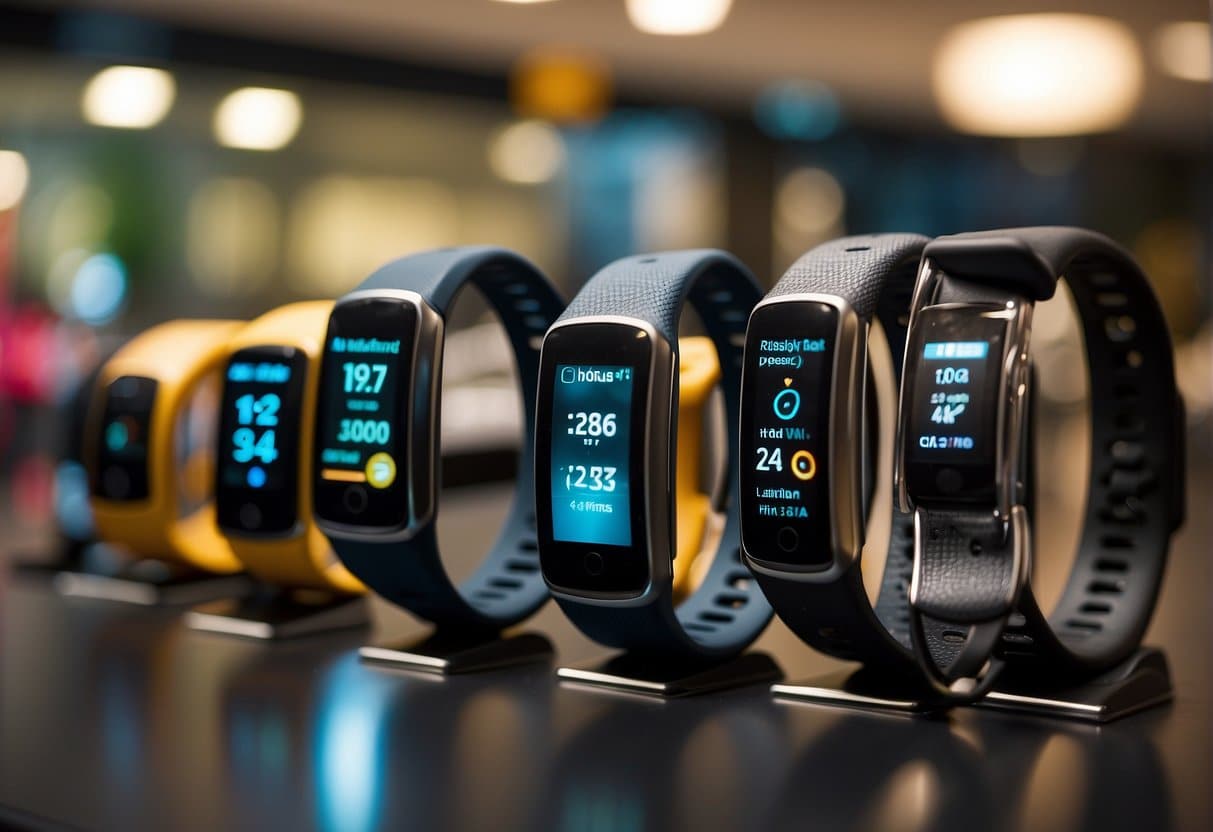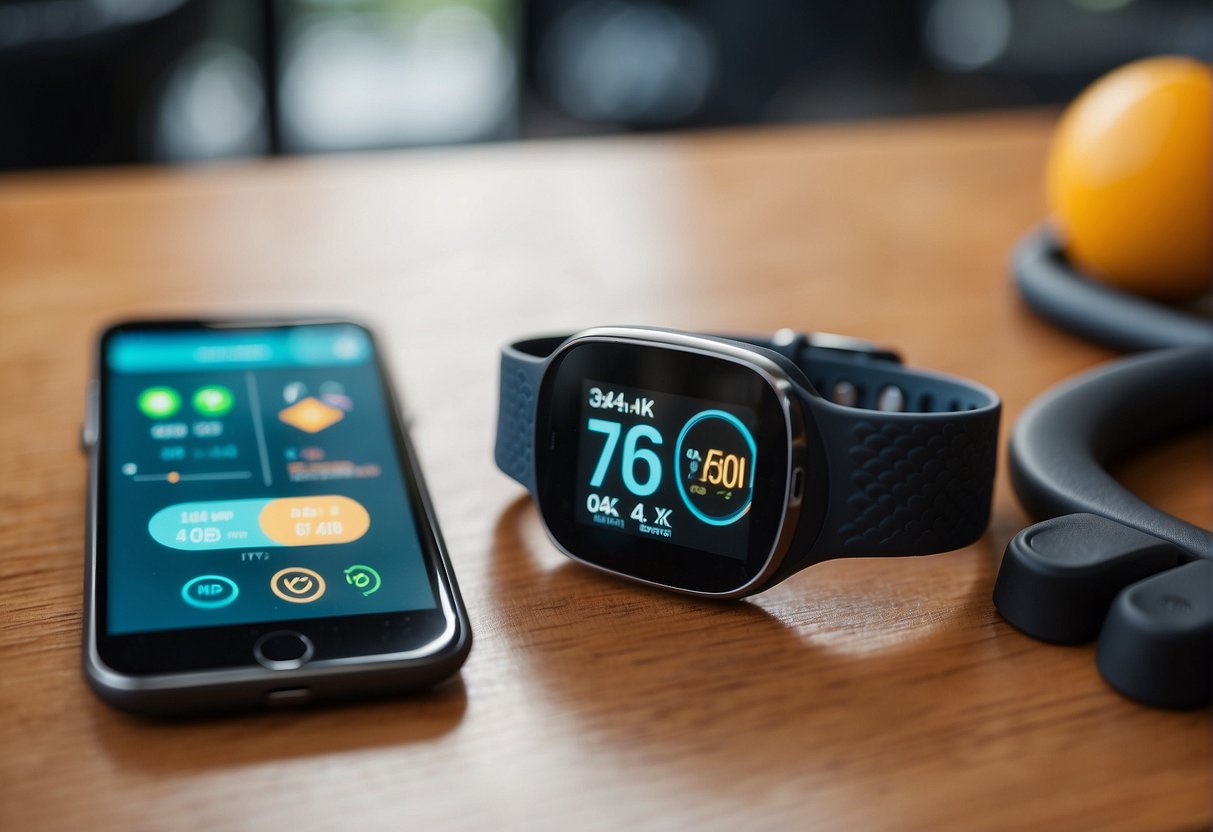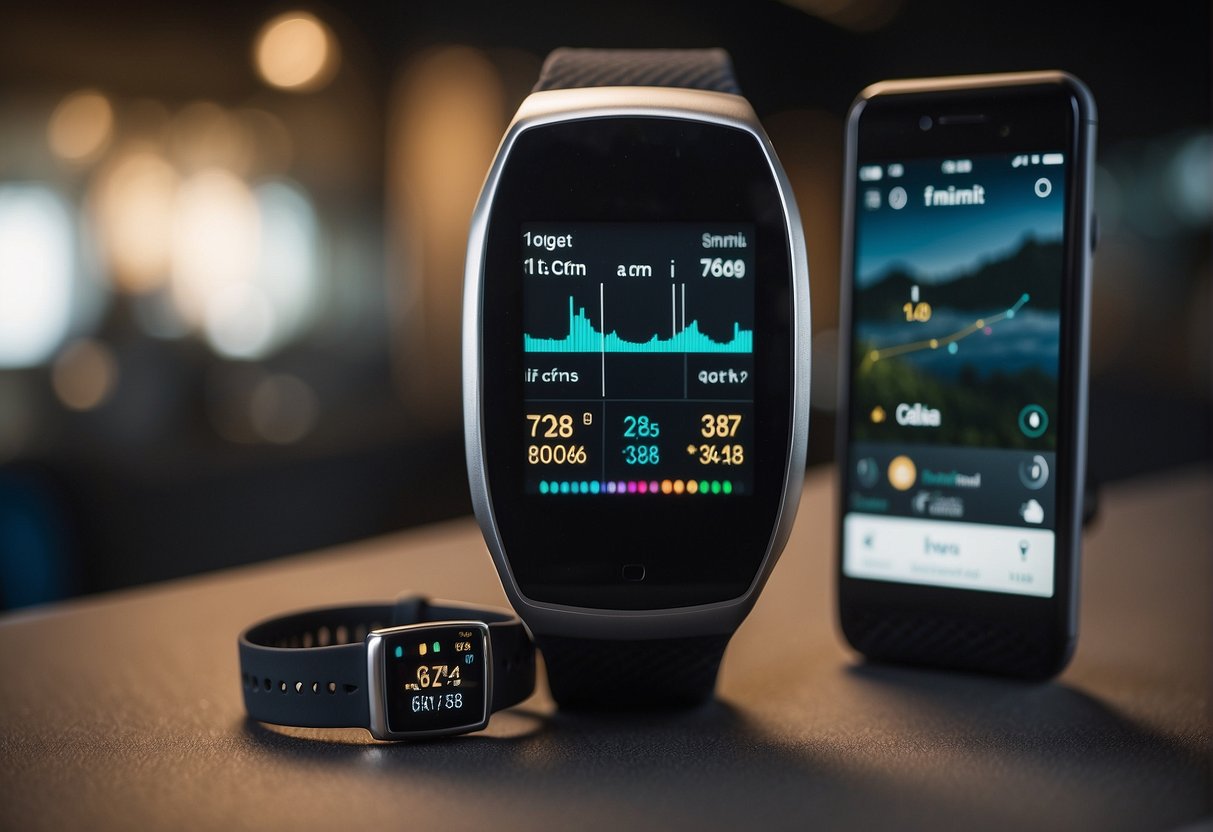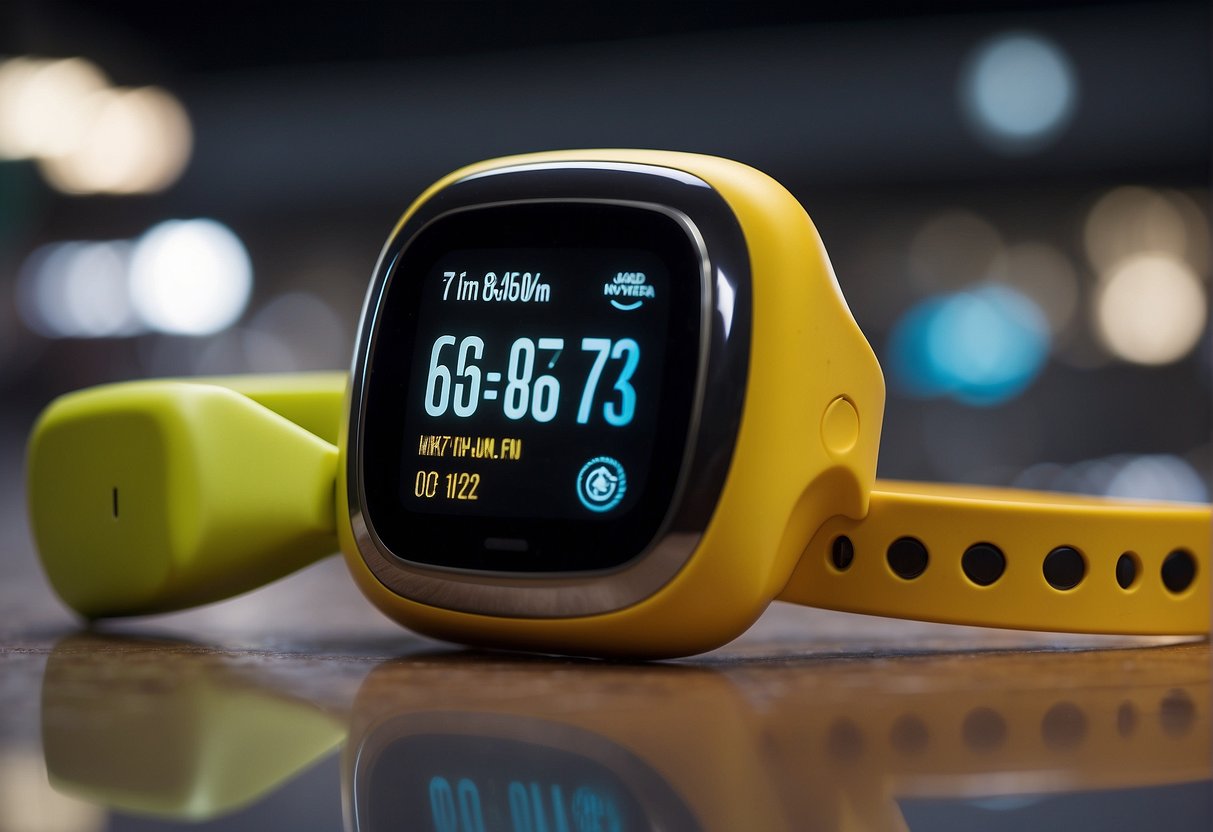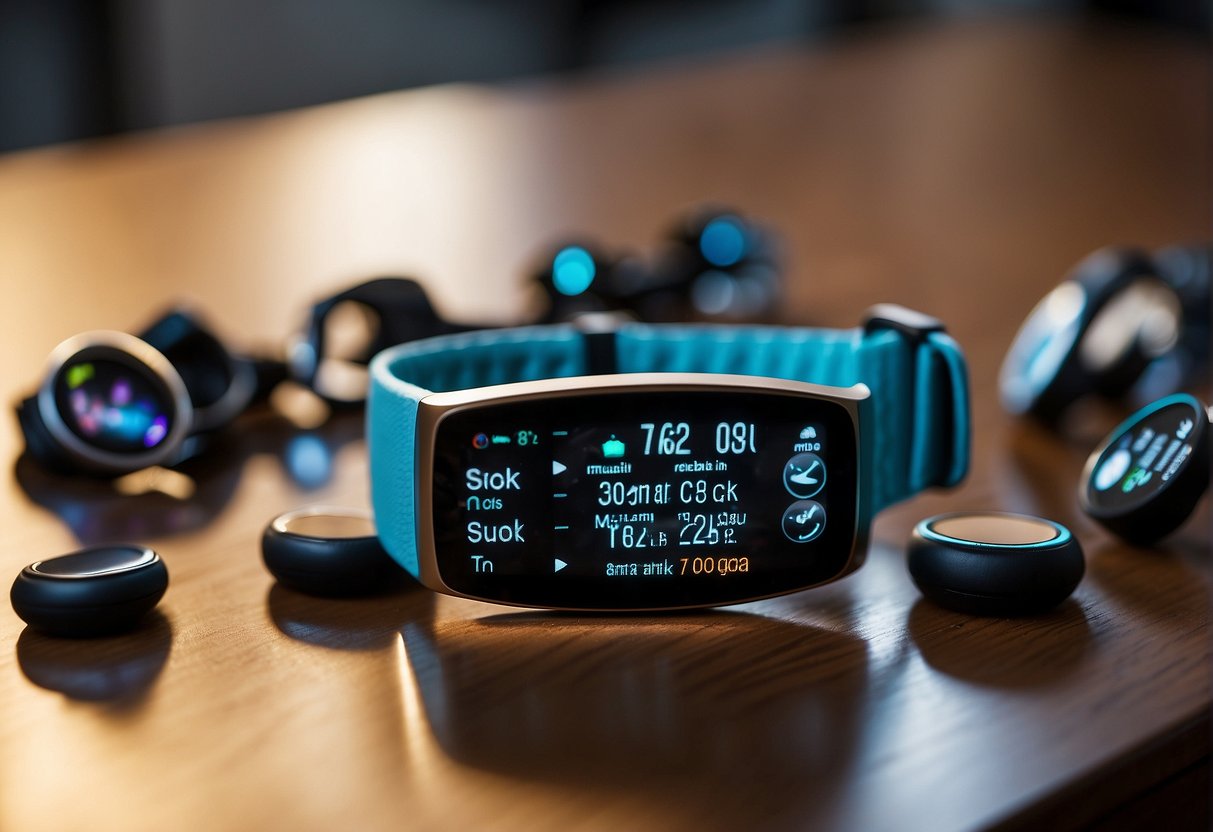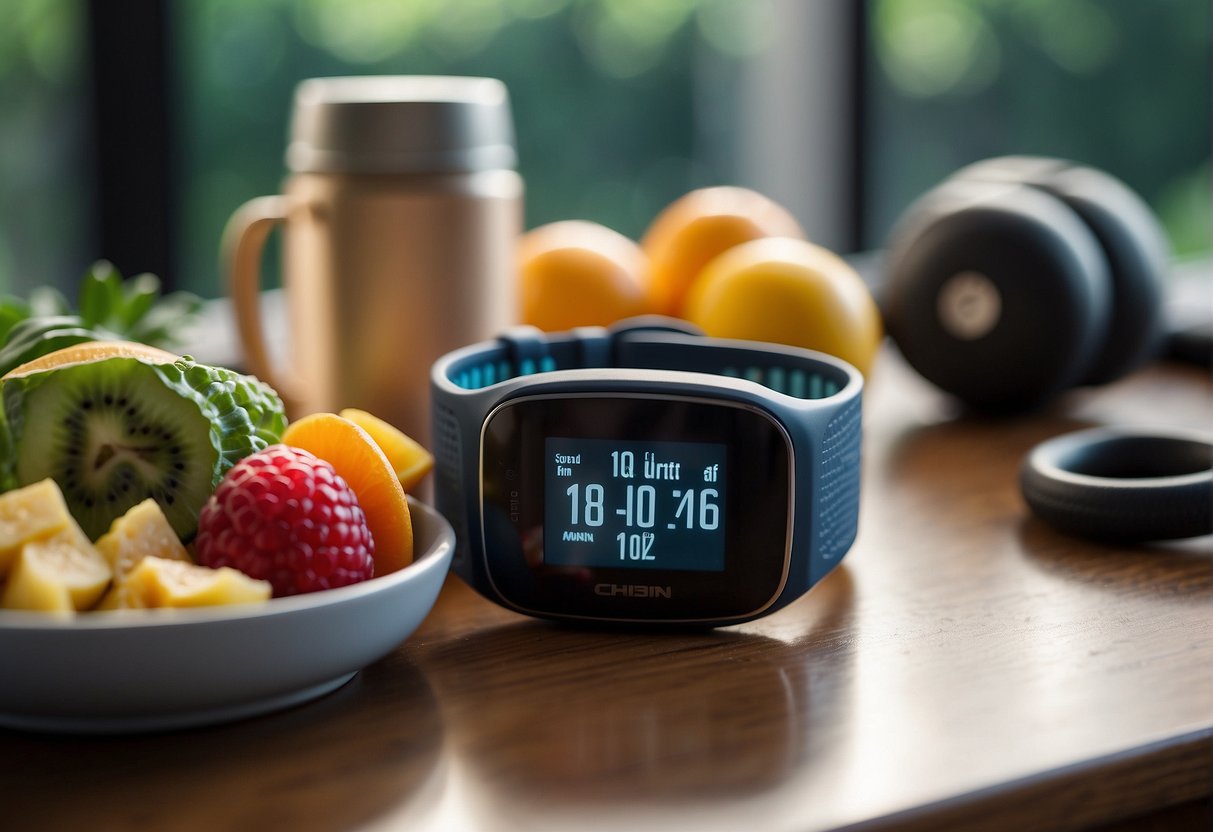Selecting the ideal physical fitness tracker can be akin to finding a needle in a haystack given the multitude of options available on the market. However, the process doesn’t have to be overwhelming. Making an informed decision entails understanding what fitness trackers are, how they function, and determining which key features align with your personal health goals and lifestyle needs. From monitoring steps and heart rate to analyzing sleep patterns and oxygen levels, today’s devices offer a broad range of functions to cater to your fitness journey.
When evaluating fitness trackers, it is essential to prioritize certain features over others based on your preferences. For example, the accuracy of health metrics, the comfort and design of the device, and its compatibility with other apps or devices play significant roles in its usefulness. Meanwhile, battery life is a practical consideration that impacts how frequently you need to charge the device. A thorough comparison of brands and models, paying attention to customer reviews and post-purchase support, can also guide you toward the best investment.
Key Takeaways
- Accurately tracking and understanding personal health metrics is vital for choosing the right fitness tracker.
- The design, comfort, and battery life are key considerations when selecting a fitness tracker.
- Comparisons between brands and post-purchase support are important for a satisfactory long-term investment.
Understanding Fitness Trackers
Selecting an ideal fitness tracker requires an understanding of what these devices offer and how they differ from smartwatches. This section will aid in distinguishing their functionalities and features.
What Are Fitness Trackers?
Fitness trackers are wearable devices designed to monitor and record a variety of health-related metrics. They typically track steps taken, distance traveled, calories burned, and sometimes heart rate and sleep patterns. Fitness trackers aim to enhance the user’s health and fitness levels by providing data that helps in setting and achieving physical activity goals. Many fitness trackers come with companion apps that allow users to analyze their data and track their progress over time.
Key Features of Fitness Trackers:
- Step counting
- Distance tracking
- Caloric output estimation
- Sleep quality monitoring (on select models)
- Heart rate monitoring (on select models)
Fitness Tracker vs. Smartwatch
The primary distinction between fitness trackers and smartwatches is their purpose. Fitness trackers are primarily focused on health and exercise data, whereas smartwatches offer a broader range of functions similar to smartphones, including message notifications, calls, and app integrations. Smartwatches often include fitness tracking capabilities but they can do much more, acting as an extension of the smartphone.
Comparison Table:
| Feature | Fitness Tracker | Smartwatch |
|---|---|---|
| Health Metrics | Extensive | Basic to Extensive |
| Notifications | Limited | Extensive |
| Battery Life | Generally longer | Shorter due to more features |
| Price | Typically lower | Typically higher |
While fitness wearables are specialized for activity tracking, smartwatches cater to a broader lifestyle approach, incorporating both fitness features and connectivity functionalities. Buyers should assess their need for specific features such as notifications, third-party apps, and the importance of battery life when choosing between these devices.
Key Features to Consider
When selecting a fitness tracker, buyers should assess the device’s precision, battery performance, resilience, and its ability to sync with other devices.
Accuracy and Sensors
A fitness tracker’s value lies in its accuracy. Key sensors to look for include a **heart rate monitor
Metrics and Health Tracking
When selecting a fitness tracker, understanding the types of metrics it monitors is essential. It ensures that users can track their progress accurately, monitor their health, and achieve their fitness goals.
Activity and Workout Monitoring
Fitness trackers commonly track a variety of activities such as walking, running, and swimming. They provide data on steps taken, distance traveled, and calories burned. This allows users to have a quantifiable measure of their daily physical activity. Many devices also offer workout-specific metrics, which can include exercise duration and intensity levels.
Health Metrics and Sleep Tracking
The health metrics provided by fitness trackers often include heart rate monitoring. Real-time data on heart rate can help individuals tailor their workouts and understand their fitness levels better. Sleep tracking is another critical aspect, as it measures both the quantity and quality of sleep, including deep, light, and REM sleep stages. These insights can guide users in establishing a healthy sleep routine for overall well-being.
Advanced Metrics: ECG, VO2 Max, and Stress Levels
More advanced fitness trackers incorporate features like ECG (electrocardiogram) readings for detecting heart rhythm abnormalities and assessing heart rate accuracy. They might also measure VO2 Max, which is an indicator of aerobic fitness and endurance capability. Additionally, some devices provide feedback on stress levels by analyzing heart rate variability, enabling users to recognize and manage their stress for better health outcomes.
Design and Comfort
When selecting a fitness tracker, one must consider the device’s style and ease of wear for prolonged periods. Both the aesthetics and the physical interaction with the tracker play significant roles in user satisfaction.
Style and Customization
Fitness trackers come in a variety of styles, ranging from sporty to sleek, with materials like stainless steel offering a more premium look. Customization options also vary, including interchangeable bands and color choices that cater to personal tastes. Many brands offer:
- Interchangeable Bands: Options including silicone, leather, or metal
- Color Variety: Basic blacks and greys to vibrant hues and patterns
Screen Quality and Size
The display is a critical aspect, influencing both functionality and comfort. A bright AMOLED display ensures readability in various lighting conditions. Screen size affects visibility of data and touch interactions, with larger screens offering a more spacious interface. One should seek out:
- Display Type: Preferably AMOLED for vibrant colors and sharpness
- Display Size: Balance between a large enough screen to read and a comfortable fit on the wrist
Navigating the Market
When selecting a fitness tracker, consumers are faced with a wide range of options, each with its own set of features and price points. The market offers devices for every kind of user, from budget-conscious individuals to performance-demanding athletes. To make an informed decision, understanding the distinction between budget models and premium devices is crucial.
Budget Models vs. Premium Devices
Budget Models are designed for consumers who require basic fitness tracking capabilities without the need for advanced features. These models often include:
- Step Counting
- Calorie Tracking
- Distance Measured
- Sleep Monitoring
Budget-friendly options can be priced as low as $25, with many solid choices available under $100. They are an excellent choice for first-time users or those who simply wish to upgrade their physical activity monitoring without a significant investment.
Premium Devices, on the other hand, cater to individuals seeking comprehensive fitness metrics and additional functionalities, which may include:
- Heart Rate Monitoring
- GPS Tracking
- Water Resistance
- Integration with Multiple Sports
- Smartphone Notifications
- Longer Battery Life
The cost of premium fitness trackers typically starts around $150 and can go up to $500 for high-end models. These devices offer the latest technology and compatibility with an array of fitness programs, making them suitable for serious fitness enthusiasts and athletes looking for the best fitness trackers to complement their rigorous routines.
When considering an upgrade or a first-time purchase, weighing the essentials against the desired features becomes a pivotal part of the process. It enables consumers to pinpoint a device that not only fits their budget but also supports their fitness goals effectively.
Evaluating Battery Performance
When selecting a fitness tracker, analyzing its battery life is crucial. Users should look for a device that balances longevity with convenience. Battery life varies widely, from several days to multiple weeks on a single charge. Consider daily usage patterns and the inconvenience of frequent charging when making a decision.
Key factors to consider include:
- Duration: Check the manufacturer’s specifications for the expected battery life, but also consult user reviews for real-world insights.
- Type: Some trackers use replaceable coin-cell batteries offering months of power, while others have rechargeable batteries needing regular charging.
Charging Time and Method:
- Time: Look for a tracker that charges quickly if frequent charging is necessary. Typically, a full charge can take anywhere from 1 to 2 hours.
- Method: Wireless charging offers convenience, but ensure that a spare cable is available for emergencies.
Tips for Extending Battery Life:
- Disable Notifications: Limiting phone notifications can save significant power.
- Adjust Syncing: Less frequent data syncing to your smartphone or computer can preserve battery.
- Lower Brightness: Reducing screen brightness extends the time between charges.
Tracker Maintenance:
- Storage: Store the tracker in a cool, dry place to maintain optimal battery health.
- Cycling: Regularly cycle the battery from full to almost empty to maintain its lifespan.
Researching and understanding these aspects will lead to a more satisfying purchase. Buyers should prioritize battery performance in accordance with their personal needs and lifestyle.
Software, Apps, and Ecosystem
When considering a physical fitness tracker, the accompanying software, app quality, and compatibility with existing device ecosystems are crucial factors.
App Features and Quality
A user must inspect the feature set and performance of the fitness tracker’s app. The app should offer a comprehensive suite of tools to track various fitness metrics such as steps, heart rate, and sleep patterns. Users should expect seamless synchronization of data between the device and the app. High-quality apps provide detailed analytics and insights, aiding in the tracking of progress over time.
Notifications for incoming texts and calls are standard, and a good app will manage these effectively without overwhelming the user. Prospective buyers should read reviews on the App Store for iPhones or the equivalent on Android devices to gauge app stability and user satisfaction. Some products, like those from Fitbit, may offer a subscription service such as Fitbit Premium for advanced analytics and personalized insights.
Ecosystem: Android vs. iOS Compatibility
Compatibility with a user’s phone operating system—Android or iOS—is paramount. Not all fitness trackers work equally well with every smartphone, and some may only support full functionality with one or the other. iPhone users should ensure the tracker is compatible with iOS and check if it supports Apple Health integration for a unified health monitoring ecosystem.
Android users should confirm compatibility with their smartphone version and consider how well the tracker integrates with Google Fit or other Android health apps. Cross-platform compatibility can be a key selling point for users who may change phone brands in the future. Users should also confirm if the tracker allows for firmware updates via the respective app store for continual improvements and new features.
Brand and Model Comparisons
When selecting a fitness tracker, the brand and specific model matter significantly, as they can vary in quality, features, and user experience.
Popular Brands
- Fitbit: Known for a wide range of models catering to different needs. Fitbit Charge 5 and Fitbit Sense are notable for their comprehensive health tracking.
- Garmin: Offers durable devices with a focus on advanced fitness metrics and long battery life, popular among outdoor enthusiasts and athletes.
- Apple: The Apple Watch Ultra stands out with its seamless integration with the Apple ecosystem, making it a top choice for iPhone users seeking a premium smartwatch experience.
Model Reviews and Recommendations
- Fitbit Charge 5: It emphasizes heart rate tracking, sleep analysis, and a built-in GPS. Slim design and a full-color display are its hallmarks.
- Fitbit Sense: Advanced health features such as stress management and ECG app. The Fitbit Sense 2 improves upon its predecessor with a refined design and faster performance.
- Apple Watch Ultra: Renowned for its robust build, large display, and extensive health and fitness tracking capabilities, including blood oxygen monitoring and a high-precision GPS.
Activity Specific Trackers
When selecting a fitness tracker, it’s crucial for buyers to consider devices specialized for their preferred activities. Advanced sensors and activity-specific metrics provide deeper insights for a more tailored experience.
Running and Cycling
Runners and cyclists will benefit from a running watch with a built-in GPS, which offers precise tracking of distance and pace. Look for features such as:
- Dynamic Performance Analytics: They gauge the effectiveness of your training by measuring your VO2 max and providing recovery tips.
- Strava Integration: This allows for social sharing and comparison with a community of athletes.
Cycling modes should include the ability to connect with additional sensors like cadence or wheel speed for detailed performance data.
| Feature | Benefit |
|---|---|
| Heart Rate Monitor | Tracks intensity of workouts |
| Waterproof Design | Suitable for all-weather use |
| Altimeter | Measures elevation gain |
Swimming and Outdoor Adventures
Swimmers should seek trackers that measure detailed swimming metrics such as stroke type, stroke count, and SWOLF scores. These devices must have an IP rating that signifies full waterproofing suitable for prolonged immersion.
For outdoor adventures like hikes, durability is key. A rugged design combined with long battery life ensures the device can withstand long days of activity. Integrated features should include:
- Compass and Altimeter: Provides orientation and elevation data.
- Temperature Sensor: Monitors environmental conditions.
Additionally, a barometer can alert users to weather changes crucial for outdoor safety. GPS functionality is also important for route tracking and navigation in the wilderness.
Lifestyle Integration
When choosing a fitness tracker, users should consider how the device will mesh with their daily routine and enhance their lifestyle. This means evaluating how the tracker is worn throughout the day and what kind of smart features, such as music controls and notifications, it offers.
Daily Use and Wearability
They need a device that is comfortable and durable enough to be worn all day. Some key factors include:
- Band Material: Silicone bands are common for their durability and comfort. Leather and metal options may offer a more professional look.
- Water Resistance: For swimmers or those who do not want to remove their tracker, water resistance is crucial.
- Battery Life: Devices vary from one day to several weeks of battery life. Longer battery life means less frequent charging.
- Size and Weight: A bulky tracker might be obtrusive, while a lightweight model can be worn without barely noticing it.
Music and Smart Features
Modern fitness trackers often double as smartwatches, incorporating features that allow one to stay connected without constantly reaching for their phone.
- Music Control: Look for trackers that let users control music playback directly from their wrist, which is particularly convenient during workouts.
- Smart Notifications: They can receive calls, texts, and app notifications, ensuring they never miss important messages.
- Voice Assistants: Some models come with built-in voice control via Alexa or other assistants, allowing for hands-free operations.
- Compatibility: It’s essential that the fitness tracker is compatible with the user’s smartphone or computer, allowing for seamless integration into their existing tech ecosystem.
Post-Purchase Support
After purchasing a physical fitness tracker, it’s crucial to understand the post-purchase support offered, including warranty and customer service as well as software updates and community engagement, as these elements are essential for an ongoing satisfactory experience.
Warranty and Customer Service
Manufacturers typically offer a standard warranty that covers defects in materials and workmanship for a specific period, usually one to two years. It’s important to check the warranty details for any limitations or exclusions. Reliable customer service is also paramount, as a responsive team can greatly enhance user satisfaction. Leading brands offer various channels for support, such as:
- Phone support: Immediate assistance during business hours
- Email or chat: Documentation of interactions for future reference
- FAQs and troubleshooting guides: Self-help resources available 24/7
Contact information should be readily accessible on the company’s website or through the product’s documentation.
Software Updates and Community
To ensure the longevity and performance of a physical fitness tracker, regular software updates are necessary. These updates often include:
- Bug fixes: Improving device stability and performance
- New features: Enhancing device capabilities and user experience
- Security patches: Keeping user data safe
Users should check how frequently updates are released and look for automatic update features.
A vibrant user community can provide additional support, tips, and motivation. Engaged communities often feature:
- Forums: Places to ask questions and share experiences
- Social media groups: Platforms to connect with other users
- Online challenges: Events to encourage fitness goals
Community engagement can be found on the brand’s website or social media pages. It encourages a sense of belonging and can be a valuable resource for maximizing the benefits of the fitness tracker.
Frequently Asked Questions
The following is a curated list of frequently asked questions that potential buyers commonly ask when searching for the best physical fitness tracker to suit their needs.
What are the top-rated fitness trackers currently on the market?
As of the beginning of 2024, leading fitness trackers include the Fitbit Charge 5, Garmin Venu 2, and Apple Watch Series 7. Consumers praise these for their blend of features, user interface, and reliability.
Which fitness trackers offer the most accurate tracking capabilities?
Garmin’s fitness trackers are often lauded for their precision in tracking, especially for outdoor activities. Devices with built-in GPS and multi-sport tracking capabilities like the Garmin Forerunner series are noted for their accuracy.
What are the best budget-friendly fitness trackers available?
Xiaomi Mi Band 6 and the Amazfit Bip U Pro are amongst the best affordable options. They provide a range of basic fitness tracking features without a significant financial investment.
How do fitness trackers with heart rate monitoring compare to one another?
Heart rate monitoring capabilities can vary between models. High-end trackers like those from the Apple Watch or Garmin series tend to offer more accurate and detailed heart rate tracking compared to more budget-conscious options.
What should consumers look for when reading fitness tracker reviews?
Consumers should look for discussions about battery life, ease of use, app compatibility, and durability. They should also consider the reviewer’s experience with the tracker during different types of physical activity to gauge performance.
What are the latest features to consider in a fitness tracker for 2024?
New fitness trackers in 2024 may offer features like stress tracking, oxygen saturation levels, sleep analysis, and temperature monitoring. Connectivity with a broader ecosystem of health devices and long-term health trend analysis are also becoming standard.
Conclusion
Choosing the right physical fitness tracker is about aligning features with personal goals and preferences. Consumers should consider battery life, comfort, accuracy, compatibility with other devices, and the quality of the companion app.
- Battery Life: Longevity is crucial for consistent tracking.
- Comfort: The device should fit well and not cause irritation.
- Accuracy: Essential for reliable data.
- Compatibility: Should sync with other personal devices.
- App Quality: Look for intuitive navigation and detailed analysis.
One should weigh the importance of additional features like heart rate monitoring, GPS, and water resistance based on their specific fitness activities. While advanced features may appeal to seasoned athletes, they may not be necessary for someone interested in basic activity tracking.
Fiscal considerations are also important. It may be tempting to opt for high-end models, but budget-friendly options can offer substantial value. Prospective buyers should seek a balance between cost and features to find a tracker that meets both their health goals and financial constraints.
Lastly, reading customer reviews and expert opinions can provide insights into the long-term viability of the device. Remember, the best tracker is one that is worn regularly and serves as a genuine aid in one’s fitness journey.

